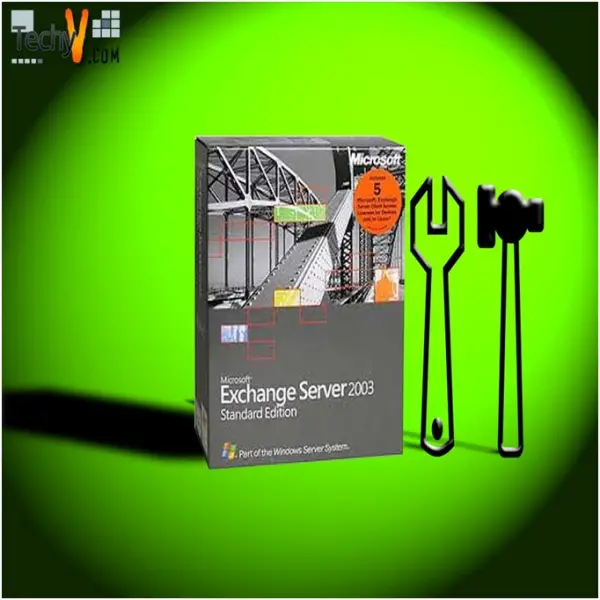Hoist that cloud: Migrating Exchange Servers
Kudos to Microsoft for refraining from clouding it up. Every old-school service provider is racing to rebrand its products in the name of cloud services, but most of the time there's nothing new on offer. But if you're only after scalability and remote server hosts, you can always go for an Exchange solution from the software giant's Business Productivity Online Standard Suite.

If you have already sucked into that vast Microsoft conspiracy, chances are your Outlook clients are all hooked up to an on-premises server. It's a glorious feeling, owning physical infrastructure outright, but it's also a costly one in terms of manpower and technological costs. Exchange, SharePoint and Communications Servers really have no good reason to sit in your office unless you're running them on a vast scale, and even then, you'll find it no small task to upgrade or even manage at a competent level. If you are only after plugging those pesky employees together, instead of running a complex data center that loses more money than data packets, it might be a good time to switch.
Let's talk about advantages. The biggest boon to the accountants would be the hugely simplified cost estimates. You've got a flat fee beginning around 10 USD a head, instead of a cacophony of quotations for physical servers and random extrapolations for future spending increases. The IT department will free up a lot of resources previously devoted to patching up, updating, servicing, and upgrading software. It's a fairer work distribution as well, since all the hassle is after all Microsoft's fault. Finally coming to their senses, they'll now do the dirty work at their end, and release a centralized administration console for your administrators. And since hosted services are built around the idea of detaching clients from servers, the former will have a lot of choices connecting to the latter: good old Outlook, browsers, and mobile devices. Windows Mobile, BlackBerry, and yes, iPhone are all supported.
Of course there will be concerns about uptime. The data centers are located all around the world, with two especially pivotal ones located in Chicago and Dublin. Currently, they are aiming for three-nines in terms of uptime (which translates to eight hours a year of unanticipated downtime), and predictably they'll compensate you with more of the same service (server credits) in case they fail. Still, you can expect a rudimentary level of embedded disaster recovery, as well as all the anti-spam and anti-virus the company has to offer elsewhere.
If you're a small business owner, you're best off with the BPOS offering. It is a bundled option with Exchange, SharePoint, Office Live Meeting and Communications Online (in short, the glorified one-stop IM solution). It's reasonably priced at 10USD/user/month, assuming you'll be firing all of your IT personnel and pawning your servers at a flea market. If you aren't fond of such radical solutions, you have only yourself to blame when you see rival firms taking up Google Apps at half the price.
Migrating is a relatively painless task, since Microsoft is not averse to your paying them regularly in addition to what you've already bought from them. Both 32-bit and 64-bit editions get their own version of Migration Tools, and the administrator can automate the task of moving mailboxes by the PowerShell cmdlets. Let us take a closer look at the actual offerings.
Exchange Online is still very much based on the 2007 version, although this is subject to change very soon. The administrator can fine-tune the size of mailbox space allocated for each user based on the overall amount purchased. While it's highly recommended that users access the service through Outlook (surprise, surprise), but it is not mandatory.
SharePoint Online is something of an "I could probably use that" bundle. Not nearly as many firms implement it on-site compared to Exchange, but once you migrate, you'll find the workspace rather helpful. Workflow management requires quite a bit of tweaking at your employees' end, but is a great enabler once properly set up. Checking in documents at the library likewise needs some getting used to, until one day you realize you can't live without it.
The same goes with Office Live Meeting, which is essentially a repackaged and rebranded NetMeeting with slide presentations thrown in (the whiteboard function was a big hint). Of course, the problem with NetMeeting was its standoffish solitude, which means bundling it into BPOS should let in quite a few newcomers. It's quite an illuminating problem when things like remote desktop and application sharing – functions which could very well occupy the whole focus of a standalone application – never get used unless you really make an effort to mesh it with other connectivity tools. Like Live Meeting, or Communications Online, the serious I-mean-business edition of Microsoft's IM. The latter has once again reinvented the wheel, this time in the form of one-to-one VoIP and video conferencing. That holy grail of multipoint video is still out of reach, even within company LAN (which is understandable as you'll have to implement a MCU bridge), but at least you'll have to applaud their cojones for charging two bucks for what used to be free.
Of course, part of the allure in clouds is the potential to dispose of all the dedicated terminals and client applications. This is called a desk less license in BPOS, and the mental image is unfortunately all too appropriate. Since BPOS is clinging firmly onto Exchange 2007 at the time of print, all a user can do off-premises is check emails through Outlook Web Access instead of Web App (of course, there's the calendar if you insist on being productive). You can also read, but not write to SharePoint server data. Feel free to unleash this tortuous working environment – effectively a "desk less" cubicle, if you think about it – on temps and consultants.
If you're thinking of signing up, remember that the whole bundle costs a tenner, whereas all the separate components would cost about 50% more. Think twice about what your employees actually need before signing up.
In fact, you might want to reconsider the previous scenario about temps. If you already own and operate physical infrastructure on your premises, the jury's still out on the economics of a complete switchover. Perhaps you've invested a fortune fine-tuning automation procedures, or you work within severe security or legal parameters. Or you just don't trust Microsoft's intentions when they put up this apparent bargain after you've purchased their server.
There are always the temps, and probably the new hires. Virtually anyone with a pulse and a laptop is a prime candidate for migration. You might even be pleasantly surprised at the ease of it all.














